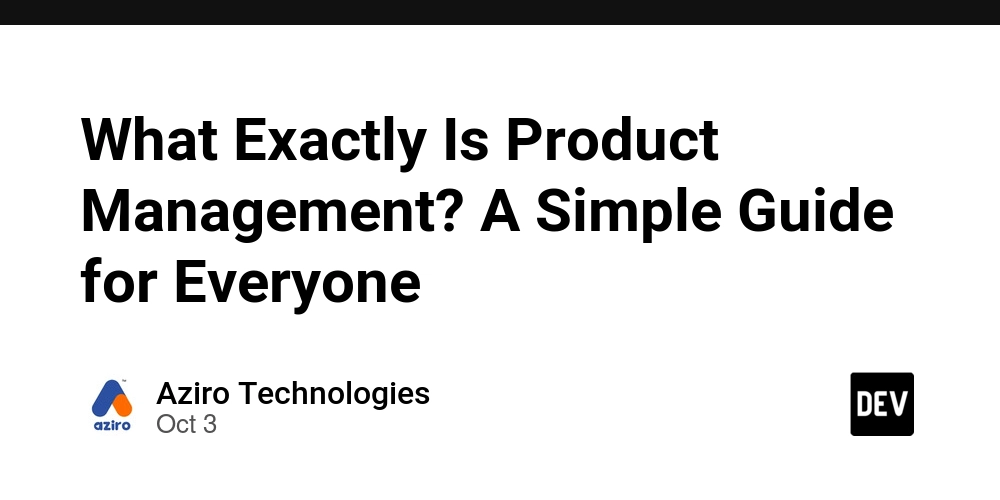It’s Not About Features, It’s About Outcomes. Imagine you’re on a road trip, and your GPS takes you on a scenic route that’s 30 minutes longer than the usual path. You arrive delighted — breathtaking views, unexpected adventure, a journey that felt tailored for you. Now imagine if the GPS had simply barked “turn left” and “turn right,” ignoring traffic, road conditions, or your preferences. Same destination, very different experience.
That’s product management in a nutshell. It’s not about ticking off features. It’s about creating experiences that delight users, drive business growth, and leverage technology to solve real problems.
Myth-Busting: PM ≠ Project Management
Many still confuse product management with project management. They sound similar, but the focus couldn’t be more different:
Project Managers are like orchestra conductors — ensuring every section plays in harmony, delivering projects on time, within scope, and on budget.
Product Managers are like composers — defining the melody, crafting the score, and ensuring the music resonates with the audience.
As Marty Cagan puts it in Inspired, the PM’s role is to discover products that are valuable, usable, and feasible, then work with teams to deliver them. Project management is building the car on time. Product management is making sure it’s the right car to build.
The Sweet Spot: Where Business, Users, and Technology Meet
A PM operates at the intersection of three worlds:
User Needs → What problems are we solving, and how are we making lives better?
Business Goals → Does this product drive growth, revenue, or retention?
Technical Feasibility → Can we realistically build and scale this with available tech and resources?
Product Management Aziro
From Outputs to Outcomes
Here’s where many teams get it wrong: measuring success by features shipped, instead of problems solved.
Case Study 1: Fintech
A fintech app launched 15 shiny new features in one year 🚀 — but adoption flatlined 📉 because they never solved the real pain point: failed transactions.
Lesson: More features ≠ more value.
Case Study 2: Slack (SaaS)
Slack gained 8,000 users in 24 hours of its beta launch. Why? It solved a deep team communication gap with elegance and focus. No gimmicks, just clarity.
Lesson: Solve real pains → adoption follows naturally.
Case Study 3: Amazon (E-commerce)
Amazon didn’t obsess over feature parity with competitors. Instead, it built one-click checkout, Prime, and personalized recommendations — relentlessly reducing friction.
Lesson: Customer obsession beats feature chasing.
Case Study 4: Airbnb (Consumer App)
Airbnb wasn’t just about beds. It created a sense of belonging by designing for trust and community. From host reviews to immersive experiences, PM decisions fueled a global movement.
Lesson: Experiences > transactions.
The Product Management Process: A Continuous Cycle
PM is not a linear checklist — it’s a loop of discovery and learning:
Discovery → Research, personas, Jobs to Be Done
Strategy → Define vision, goals, market positioning
Prioritization → Balance impact vs. effort with RICE, KANO, or similar frameworks
Execution → Collaborate with design, engineering, QA
Measurement → Track DAU, retention, churn, NPS
Iteration → Learn, adjust, evolve
Product Management1
The Skills That Matter
Great PMs don’t just manage backlogs — they influence without authority. They need:
Empathy → Deeply understand user needs
Empathy means going beyond surface-level feedback to grasp the emotions, motivations, and challenges of users. When you truly understand their perspective, you can design solutions that feel intuitive and impactful.
Strategic Thinking → Connect the dots between market, product, and business
Strategic thinking is about seeing how customer needs, market shifts, and business objectives align. It ensures that every product decision contributes to both immediate impact and long-term growth.
Communication → Translate across tech, business, and customers
Strong communication bridges the gap between technical teams, business leaders, and customers. It makes complex ideas clear and actionable for all stakeholders, ensuring alignment and trust.
Data Fluency → Use evidence to guide choices, not gut instinct alone
Data fluency means using analytics, metrics, and research to make smarter decisions. It reduces reliance on assumptions and ensures strategies are backed by real-world evidence.
Adaptability → Stay resilient in shifting markets
Adaptability allows teams to respond quickly to new challenges and changing priorities. It’s about embracing change as an opportunity rather than resisting it as a threat.
As McKinsey puts it, strong PMs act as “mini-CEOs of the product”
Why Product Management Matters More Than Ever
In today’s fast-paced, tech-driven world, PM isn’t optional. Companies that get it right can:
Drive growth through innovation and customer delight
Stay ahead by solving real problems, not chasing vanity features
Build products loved — and advocated for — by millions
Those that miss the point? They burn energy in the “feature factory,” shipping more but changing little.
Wrapping Up(and What’s Next)
So, what exactly is product management? It’s the art and science of creating value where user needs, business goals, and technical feasibility intersect. It’s not about ticking features off a roadmap. It’s about asking, “What changed for the user because of what we built?” That’s the mindset shift. And this is just the beginning.
In the next post of Beyond the Backlog, we’ll tackle the feature factory trap — why teams confuse features with strategy, and how to break free.
Stay tuned …
Article written by Deep Verma | Exploring product management beyond the backlog
Follow the series: #BeyondTheBacklog | #AziroOnProducts



